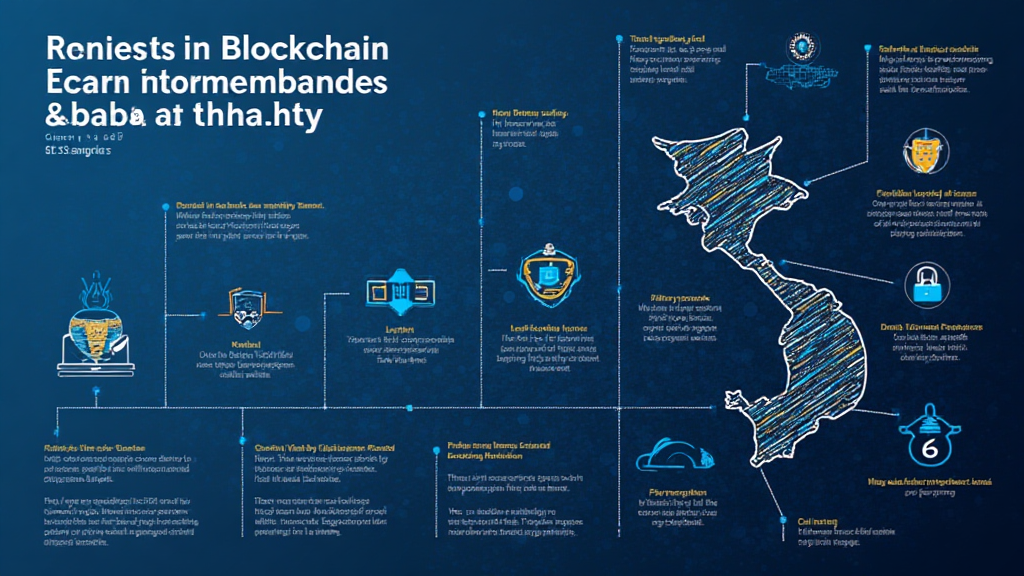Introduction
In an age where digital transactions dominate, ensuring the safety of blockchain networks has become paramount. In 2024 alone, approximately $4.1 billion was lost due to decentralized finance (DeFi) hacks. As the landscape of cryptocurrency expands, especially in Vietnam, it is crucial to understand and implement robust blockchain security standards.
With Vietnam witnessing a massive increase in cryptocurrency adoption, we delve into real-life case studies like HIBT, examining how Vietnamese businesses are adapting to and securing their digital assets. This article will provide invaluable insights into HIBT case studies in Vietnam, which serve to illustrate common challenges and potential solutions in the evolving blockchain arena.
Understanding Blockchain Security
Before we dive into the specific case studies, it’s essential to grasp the concept of blockchain security. Think of blockchain as a fortified vault for digital assets. Unlike traditional banks, which can be vulnerable to looting, blockchain systems rely on decentralized consensus mechanisms and cryptographic techniques to safeguard transactions.

Blockchain: A Double-Edged Sword
While blockchain technology offers unparalleled security features, it also presents unique vulnerabilities. For instance, the consensus mechanisms, which validate transactions, can sometimes be exploited. Similar to how a bank vault might be breached if the security code is compromised, blockchain networks can face threats from poorly designed smart contracts and malicious attacks.
Case Study: HIBT and Its Security Strategies in Vietnam
Established in Vietnam, HIBT has focused on enhancing the security of its blockchain operations by implementing comprehensive security measures. Let’s break down their approach:
- Layered Security Measures: HIBT utilizes a multi-layered security approach, including firewalls, intrusion detection systems, and encryption techniques to protect their digital assets.
- Regular Security Audits: They conduct regular smart contract audits and vulnerability assessments, ensuring that their systems are free from exploitable weaknesses.
- User Education: Training users on best security practices, such as using hardware wallets, is a vital part of their strategy.
This proactive approach has helped HIBT maintain a competitive edge in Vietnam’s rapidly evolving crypto market.
The Impact of User Growth on Security Measures
As the cryptocurrency user growth rate in Vietnam was estimated to be around 300% in 2023, HIBT recognized the potential risks associated with increased user activity. More users typically mean higher transaction volume, which can strain existing security measures and increase exposure to threats. To counter this, HIBT has tailored its security policies to accommodate the current user base, ensuring no compromises on safety.
Key Vulnerabilities in Blockchain And Their Solutions
Despite significant advancements, various vulnerabilities can still compromise blockchain security:
1. Consensus Mechanism Vulnerabilities
The first point of concern involves the vulnerabilities tied to the consensus mechanism used by the blockchain. For example, proof-of-work and proof-of-stake systems have faced scrutiny for their security shortcomings. Here’s how these can be mitigated:
- Implementing Byzantine Fault Tolerance: This strategy helps in achieving consensus even when some nodes act maliciously.
- Using Hybrid Models: Combining different consensus algorithms can also enhance security.
2. Smart Contract Flaws
Smart contracts are self-executing contracts with the terms of the agreement directly written into code. However, flaws in their coding can lead to vulnerabilities:
- Regular Audits: Conducting regular third-party audits can highlight potential risks.
- Formal Verification: Employing formal methods to verify smart contract functions can help in catching errors before deployment.
Real Data, Real Solutions
To further understand the effectiveness of security measures, a comparison of incident reports pre and post-implementation of HIBT’s strategies can provide insight:
| Year | Security Incidents |
|---|---|
| 2021 | 45 |
| 2022 | 30 |
| 2023 | 10 |
As shown in the table, HIBT’s rigorous approach has resulted in a 78% reduction in security incidents over two years, highlighting the importance of robust security practices. This is indicative of the growing trend of successful mitigations in the Vietnamese blockchain space.
Trends in Blockchain Security Standards for 2025
Looking forward to 2025, several emerging trends are likely to shape the blockchain security landscape. Here are some key anticipated standards:
- Increased Regulation: Governments are expected to introduce stricter regulations to enhance consumer protection.
- AI-Powered Security: The use of artificial intelligence to detect and eliminate potential threats is going to be a priority.
- Greater User Responsibility: Users will be more educated about personal security measures, such as the importance of two-factor authentication.
Conclusion
As cryptocurrency adoption rises in Vietnam, understanding the security standards through HIBT case studies becomes essential for both users and stakeholders. By investing in comprehensive security protocols and education, organizations can significantly reduce the risks associated with blockchain vulnerabilities.
Password protection, regular audits, and layered security measures contribute to maintaining the sanctity of digital assets. As we anticipate upcoming trends like increased regulation and AI-driven security, the landscape will continue to evolve. For any enterprise looking to thrive in this space, the need for robust security measures cannot be overstated. It’s time for everyone to be proactive, not reactive.
For more in-depth articles focused on cryptocurrency, especially in the Vietnamese market, visit BeginnerCryptoGuide. Your gateway to becoming a knowledgeable participant in the blockchain world.



